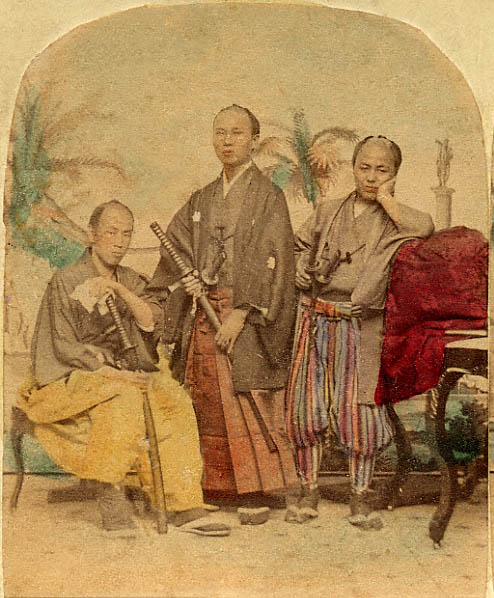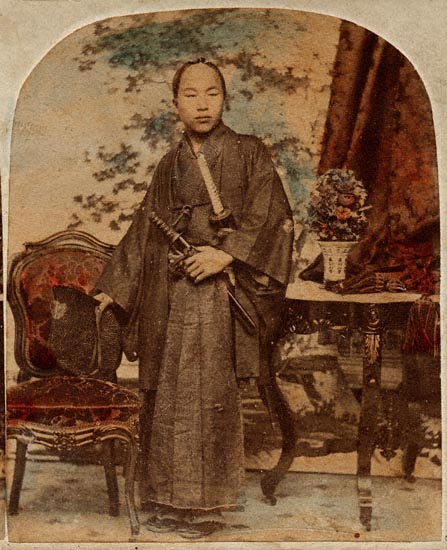Tateise Onogero, or “Tommy,” was the pet of the ship, as he afterwards became of the ladies while in the United States. He was seventeen years of age, and was the adopted son of Tokujuro, the second Interpreter, by whom he was placed at the Dutch school at Nagasaki, to learn the English language. After acquiring a very imperfect knowledge of a small vocabulary, he was brought to Yokuhama, and given a situation as Interpreter in the Custom-house, where his obliging disposition and peculiar, nervous, and, at the same time, sociable manners, soon made him so popular with the merchant’s clerks who had to transact business at the Custom-house, that the poor fellow was kept in a constant state of excitement by his untiring efforts to please all, for no other Interpreter would be approached as long as his services could be procured.
I had occasion to employ him only two days before the ship left Yokuhama bay for Yedo, to receive the Embassy on board, and he then expressed the greatest apprehension lest he should not be permitted to join it. When he came on board afterward, I never witnessed more exuberant happiness in any countenance or manner than he exhibited; he seemed to want to embrace everybody in the ship, and his delighted appearance was observed even among the crew, to many of whom he advanced with a frank and cordial “How d’ye do?” The Captain of the main top was something of a wag, and never permitted interlopers in the starboard gangway without attaching some expressive sobriquet to them, the appositeness of which caused it to be generally adopted. To this facetious individual is our friend Tateise Onogero indebted for the euphonious nom de guerre under which he took captive so many of his fair admirers in our novelty loving country.
Tommy was in and out of the ward room an average of ten or twelve times a day, and, occasionally, when he would be attacked with the indescribable qualms of seasickness, he would fall asleep like a weary child upon the sofa; on awakening, after an hour’s nap, he would evince the greatest astonishment at his whereabouts, and take a sudden leave with a “Good morning all gentlemens,” although it might happen to be late in the afternoon. It seemed quite impossible to fix his attention upon any one subject more than a minute; and, frequently, just as it might be presumed his interest was excited to such a degree as to insure his remaining, he would suddenly depart, saying, “I have business; therefore, I go; good bye,” the last words being spoken after he was out of sight.
Source: CHINA AND JAPAN , by Lieutenant James D. Johnston, U.S.N. (1860) ; complete online transcription available here (opens in a new window)
(click here to return to top of this page)






